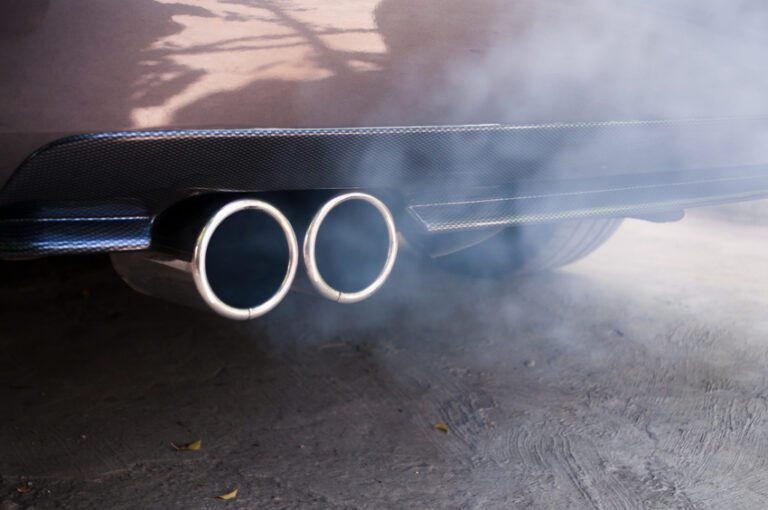How Hot Do Exhaust Headers Get: Uncovering the Intense Temperature Levels.
Exhaust headers can reach high temperatures up to 1,200 degrees Fahrenheit (648 degrees Celsius). Exhaust headers are an integral part of an engine’s exhaust system, responsible for collecting and guiding exhaust gases away from the engine cylinders.
Due to the intense heat generated during the combustion process, exhaust headers can become extremely hot. This high temperature is a result of the exhaust gases passing through the headers, causing them to heat up significantly. Understanding the level of heat generated by exhaust headers is crucial for various reasons, including vehicle safety and performance optimization.
Thermal Efficiency Of Engines
Engines generate a significant amount of heat during the combustion process, and this heat needs to be efficiently managed for optimal performance. The thermal efficiency of an engine is a measure of how effectively it converts the chemical energy in fuel into mechanical work. One important aspect of thermal efficiency is the temperature of the exhaust headers.
During combustion, the fuel-air mixture in the engine cylinder undergoes a rapid chemical reaction, producing high temperatures. This heat is transferred to the surrounding engine components, including the exhaust headers. The exhaust headers are responsible for collecting and channeling the exhaust gases away from the engine.
The hot exhaust gases carry a considerable amount of heat, and this heat transfer process plays a crucial role in engine performance. Efficient design and materials used in exhaust headers allow for better heat dissipation and minimize the risk of overheating. Components such as ceramic coatings and thermal wraps can further enhance exhaust header insulation, reducing the release of heat into the engine bay.
Understanding the thermal efficiency of engines and heat transfer to the exhaust gases helps in optimizing engine performance, preventing damage, and improving overall efficiency.
Design Of Exhaust Headers
The design of exhaust headers plays a crucial role in determining how hot they get. Several factors contribute to the overall performance and thermal management of headers. Firstly, material selection and composition are vital to ensuring optimal durability and heat dissipation. High-quality materials that can withstand high temperatures, such as stainless steel or ceramic coatings, are often preferred.
Another crucial consideration is the pipe diameter and length. The size of the tubes affects exhaust gas velocity and flow, impacting engine performance. Optimal diameters and lengths can improve low-end torque and high-end power.
Additionally, the number and arrangement of primary tubes influence the scavenging effect and exhaust gas flow. The primary tubes’ length and diameter should be carefully calibrated to maximize exhaust gas extraction, minimize backpressure, and enhance engine performance.
Impact Of Driving Conditions
htmlEngine load and RPM as well as ambient temperature and air density play crucial roles in determining how hot exhaust headers get. Engine load is the amount of stress placed on the engine, which is influenced by factors such as acceleration, towing, or driving uphill. Higher engine loads generate more exhaust gases, increasing the header’s temperature.
RPM, or revolutions per minute, is the number of engine rotations in a minute. Higher RPMs mean more exhaust gases passing through the headers at a faster rate, leading to increased heat production. Ambient temperature and air density also affect header temperatures. Hotter weather conditions and thinner air result in hotter headers.
To summarize, engine load, RPM, ambient temperature, and air density all contribute to the overall heat generated by exhaust headers. These factors should be considered when assessing the potential heat levels and ensuring proper insulation and cooling mechanisms, especially in high-performance or heavy-duty vehicles.
Table: Factors Influencing Exhaust Header Temperature
| Factors | Impact |
|---|---|
| Engine Load | Higher load leads to increased exhaust gases and heat |
| RPM | Higher RPM generates more exhaust gases and increases heat production |
| Ambient Temperature | Hotter weather conditions contribute to hotter headers |
| Air Density | Thinner air results in increased heat |

Credit: www.amazon.com
Temperature Sensors
Exhaust headers in a vehicle can reach extremely high temperatures, and monitoring these temperatures is vital for proper engine performance and safety. Various types of temperature sensors are used to measure the heat generated by exhaust headers, providing valuable information for engine control systems. Bead thermocouples and shielded thermocouples are commonly used temperature sensors in exhaust applications. Bead thermocouples consist of two wires joined together, forming a temperature-sensing bead. On the other hand, shielded thermocouples have a protective shield to minimize interference from surrounding heat sources. These sensors are installed directly onto the exhaust headers, in close proximity to the hottest areas. Installation locations typically include the primary tubes, collector, and downstream pipe.
Measurement Techniques
Direct Measurement Methods
Direct measurement methods provide accurate and precise readings of exhaust header temperatures. These methods involve using specialized temperature sensors, such as thermocouples or infrared pyrometers, to directly measure the surface temperature of the headers. Thermocouples can be attached to the headers, while infrared pyrometers use non-contact measurements to determine the temperature.
Indirect Measurement Methods
Indirect measurement methods estimate the exhaust header temperature based on other factors. One common indirect method is using an engine simulation software that calculates the header temperature based on engine characteristics, such as air-fuel mixture, engine speed, and load. Another indirect method is using thermal imaging cameras to visualize the heat distribution on the headers, allowing for estimation of the temperature.
Data Analysis And Interpretation
Temperature readings of exhaust headers can vary based on multiple factors. These factors include the material of the headers, the engine’s operating conditions, and the distance from the headers. Different materials have varying thermal conductivity levels, which affect how the heat is transferred. Additionally, operating conditions such as engine load, RPM, and exhaust gas flow can influence the temperature of the headers. Higher loads and higher RPMs generally lead to increased temperatures. Moreover, the distance from the headers also plays a role, as closer proximity to the source of heat will result in higher readings. It is essential to understand these factors to accurately interpret temperature variations in exhaust headers.
Effects On Engine Performance
Effects on Engine Performance
Exhaust headers play a crucial role in engine performance, impacting both power output and torque as well as fuel efficiency and mileage.
Power output and torque: Properly designed and installed exhaust headers can significantly improve power output and torque. By maximizing the flow of exhaust gases out of the engine cylinders, headers reduce back pressure, allowing the engine to breathe more easily. This leads to enhanced combustion and increased power delivery.
Fuel efficiency and mileage: Exhaust headers can also have an effect on fuel efficiency and mileage. Improved engine breathing, achieved through efficient header design, can optimize fuel consumption by promoting more thorough combustion. This results in better fuel economy and increased mileage.
Therefore, it is important to consider the impact of exhaust headers on engine performance, as they can enhance both power delivery and fuel efficiency.
Impact On Engine Components
Exhaust headers can reach extremely high temperatures, especially during aggressive driving or racing. These excessive temperatures can have a significant impact on various engine components, including exhaust valves and cylinder heads.
The intense heat generated by the headers can potentially cause damage to the exhaust valves. Over time, the repeated exposure to extreme temperatures can lead to valve warping or burning. This can result in reduced engine performance, misfires, and even engine failure.
In addition to the risks posed to the exhaust valves, the intense heat from the headers can also affect the cylinder heads. The high temperatures can cause the cylinder heads to expand, leading to potential warping or cracking. This can result in coolant leaks, loss of compression, and ultimately, engine damage.
It’s not just the direct impact on valves and cylinder heads that is a concern. The surrounding components such as gaskets, exhaust manifold, and other nearby engine parts can also be affected by the high temperatures. Improperly designed or low-quality components may not be able to withstand the extreme heat, leading to premature failure and costly repairs.
Ensuring proper insulation and using high-quality materials when installing exhaust headers can help mitigate the risks associated with excessive heat. Regular maintenance and inspection can also help detect and address any potential issues early on, preventing costly damages to the engine components.
Frequently Asked Questions For How Hot Do Exhaust Headers Get
How Hot Does An Exhaust Header Get?
An exhaust header gets extremely hot, reaching temperatures up to 1,000 degrees Fahrenheit.
How Hot Do Headers Get On A Motor?
Headers on a motor can get very hot, reaching temperatures around 1,200 degrees Fahrenheit.
How Hot Do Ceramic Coated Headers Get?
Ceramic coated headers can get pretty hot. They can reach temperatures up to 1,800°F (982°C). The ceramic coating helps to reduce heat transfer, keeping the engine bay cooler and improving performance.
Why Are My Headers Getting Hot?
Headers can get hot due to several reasons, such as a malfunctioning cooling system, low coolant levels, or a faulty thermostat. It’s important to check these components and ensure they are functioning properly. Additionally, poor airflow or a clogged radiator can also cause headers to overheat.
Regular maintenance and inspection can help prevent this issue.
Conclusion
Investigating the temperature levels of exhaust headers is crucial for vehicle enthusiasts. Understanding the high temperatures these components can reach will help drivers take precautions and make informed decisions. From our analysis, it is evident that exhaust headers can reach incredibly high temperatures, causing potential risks if not handled properly.
By being aware of this, drivers can ensure the longevity and performance of their vehicles while prioritizing safety. So, keep in mind the significance of monitoring exhaust header temperatures to optimize vehicle maintenance and avoid any unnecessary dangers.








